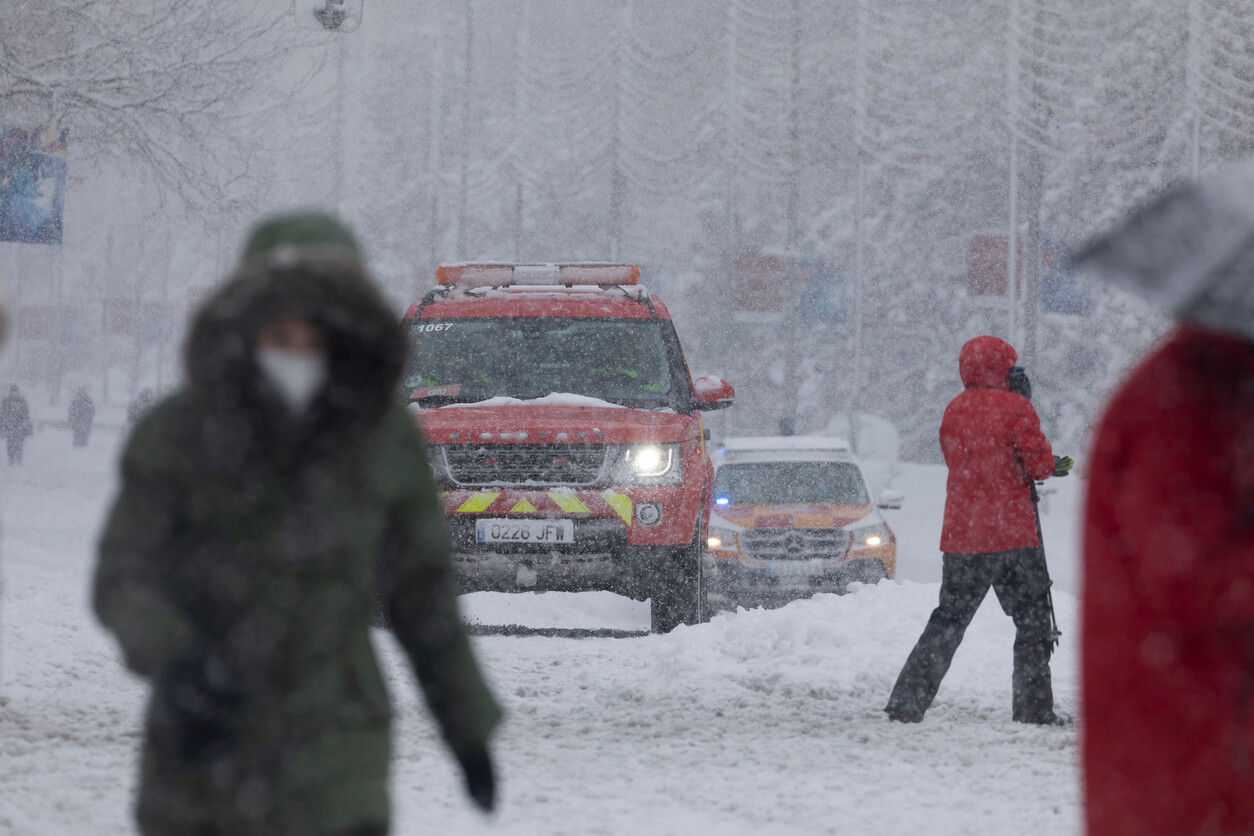
If your organization doesn’t have a crisis communication plan for winter storms, it’s time to make one. Why?
2021 was rife with worldwide weather-related electricity crises. The outages in Texas during Winter Storm Uri are only one example of how quickly electricity infrastructure can fail during a severe weather event. But when the grid goes down, civilians rely on first responders for help.
A crisis communications plan can help you establish specific SOPs for power outages, comms system downtime and other emergency scenarios. Let’s break down how to build an airtight policy.
1. Gather Intel for Your Area
The first step to building a winter storm plan is gathering information specific to your region. t Build a variety of documents (digital and analog) that list:
- Critical areas in your community that may be in need during a winter storm, like:
- Hospitals
- Schools, colleges and universities
- Other EOCs or public safety centers
- Public transit hubs
- Shelters for the homeless and use during emergency evacuations
- Locations and inventories of emergency supplies, like:
- Bottled water
- Blankets
- First aid materials
- Fuel
- Non-perishable food
- Contact information for:
- Critical public safety staff
- Public officials
- State and national agencies (e.g., the National Guard)
- Utility company managers
- Emergency contractors (e.g., to fix downed power lines)
To keep these lists current (and useful at a moment’s notice), consider updating them once per quarter – or even more frequently. Make sure that your entire staff can access them in the event of an emergency.
Inventory Your Equipment and Identify Alternatives
Your “intel” documents should also identify the comms equipment available to your organization—and the alternatives you plan to use if the grid or cellular network fails.
This list of comms equipment should include critical information, including:
- Locations and quantities of tools
- Storage locations and inventories of batteries or other backup power sources
- Details concerning auxiliary or backup equipment, like:
- Satellite phones
- Radios and walkie-talkies
- Mobile command center vehicles
2. Create Checklists
Checklists can help your team deploy efficiently, stay organized and solve problems during a winter storm.
Since storms are somewhat predictable, a pre-storm checklist can help your team prepare. That list might include:
- Briefing staff on the emergency comms plan
- Preparing emergency response units and sub-teams
- Updating and distributing the intel documents described above
- Establishing security needs
- Creating evacuation procedures for civilians (if needed)
- Developing plans for handling predicted property damages or disabled equipment (e.g., frozen fire hoses)
Your team will have to stay flexible during a storm, so a checklist might not be the best tool for maintaining efficiency. However, comms blasts during regular intervals can help keep all teams on-task and up-to-date throughout the storm.
Post-Incident Assessment and Recovery
Consider building another checklist, however, for the aftermath of the storm. Once the weather passes, you should:
- Assess your ongoing security needs and assign staff as needed
- Check your supply and equipment inventories
- Continue to test your comms systems and take action if there are any outages
- Keep monitoring the critical locations in your area
- Start cleanup operations
- Provide relief for civilians by:
- Distributing emergency supplies
- Responding to calls as needed
- Keeping local shelters appraised of cleanup efforts
- Providing an all-clear when it’s safe for evacuated civilians to return home
Creating the documents described above ahead of time will decrease some of your comms needs during and after the storm. When everyone is prepared, you’ll have to communicate about (and resolve) fewer unexpected situations.
3. Build a Comms SOP
You’ll also need to establish an SOP specific to winter storm scenarios. For example, if your area receives hurricanes and winter storms, this SOP may be similar to your hurricane emergency plan.
Your SOP should include:
- The procedures for using primary equipment—the tools you typically use
- These procedures might be different during a storm (plan accordingly)
- The procedures for distributing and using secondary equipment if your first-line tools fail
- Approaches and options if your secondary equipment fails
- Chains of command and message relay flows (if they’ll differ during a storm scenario)
Your comms SOP should also stipulate whom you’ll ask for help when systems are down. For instance, if you use a Network Operations Center (NOC), consider asking for their input while building your crisis communications plan for winter storms. They might be able to advise on:
- Secondary or tertiary equipment that can work if the grid and cell networks fail
- Approximate restoration times during storm-related outages
- Comms-related chain of command or procedural changes that could help your team operate more efficiently when using secondary or tertiary comms equipment
Turn to First Responder Net for Dependable Network Stability
Creating a crisis comms plan ahead of winter storm season can help your team continue to do what they do best when severe weather strikes—respond to civilians’ needs and keep your community safe.
If you’re worried about the potential consequences of a downed cellular network, consider your options for a backup comms network—like First Responder Net. First Responder Net is a network-of-networks for public safety and first responder teams that supports off-grid communications via a combination of cellular and satellite networks.
If you’re ready to join the community of over 1,000 agencies using First Responder Net, request more information from IP Access International today.